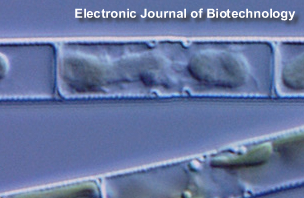Abstract
Biofilm systems are efficient in the removal of organic matter and ammonium from wastewaters. In this study, loofa sponge, a natural product, was used as a supporting medium in an aerated submerged fixed-film reactor to evaluate its performance in removing organic matter and nitrogen from wastewater. Four pilot runs were performed with chemical oxygen demand (COD) concentrations of 100, 200, 300 and 400 mg l-1 to provide an organic loading rate of 0.6, 1.2, 1.8, and 2.4 kg m-3d-1 respectively. In these pilot runs, the influent ammonium nitrogen concentrations were justified to 5, 10, 15 and 20 mg l-1 as N to provide an influent nitrogen loading of 30, 60, 90 and 120 g m-3.d-1 respectively. Although soluble COD removal efficiency greater than 80 percent was achieved up to a loading rate of 2.4 kg m-3d-1, loofa deformation and clogging after 72 days of application might be considered a serious shortcoming during use in full-scale applications. Nitrogen removal efficiency decreased from 85.6% at an organic loading rate of 0.6 kg m-3d-1 to 56.1% at an organic loading rate of 2.4 kg m-3d-1.
Upon acceptance of an article by the journal, authors will be asked to transfer the copyright to Electronic Journal of Biotechnology, which is committed to maintain the electronic access to the journal and to administer a policy of fair control and ensure the widest possible dissemination of the information. The author can use the article for academic purposes, stating clearly the following: "Published in Electronic Journal of Biotechnology at DOI:10.2225/volXX-issueX-fulltext-XX".
The Copyright Transfer Agreement must be submitted as a signed scanned copy to biotec@ucv.cl. All authors must send a copy of this document.
